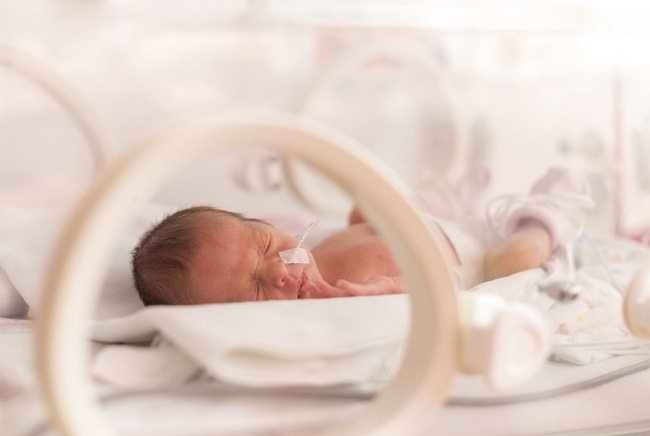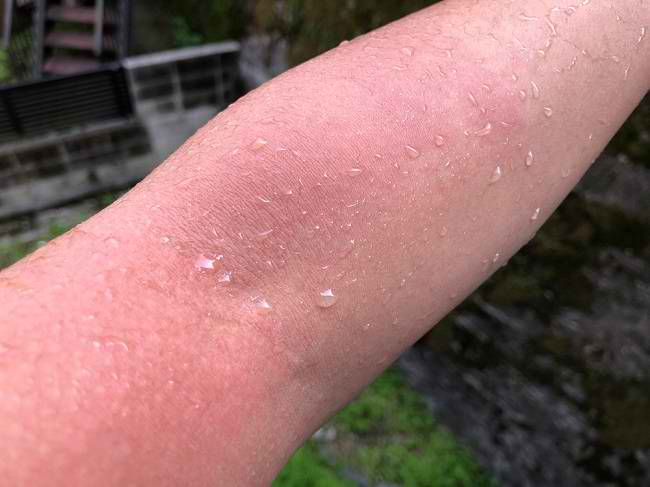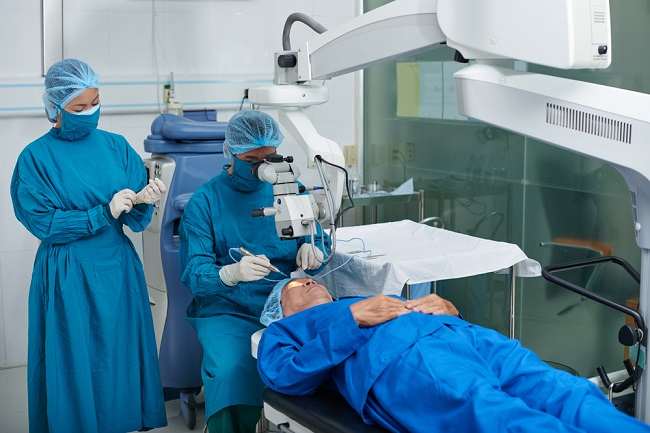Neurofibromatosis type 1 iscondition of tumor growth in nerve tissue caused bygenetic disorders.These tumors are generally benign, but in some cases can develop into cancer.
This disease consists of 3 types, namely neurofibromatosis type 1, neurofibromatosis type 2, and schwannomatosis. Of the three types, neurofibromatosis type 1 is the most common. In general, neurofibromatosis type 1 is more common in children than adults.

ReasonNeurofibromatosis Type 1
Neurofibromatosis type 1 is caused by a mutation in the NF1 gene on chromosome 17. This gene functions to produce neurofibromin, a protein that regulates the growth of body cells, thereby preventing these cells from developing into tumors.
Abnormalities in the NF1 gene cause reduced neurofibromin production, or the neurofibromin present is not functioning optimally. As a result, body cells can grow uncontrollably and become tumors.
Risk Factor NeurofibromatosisType 1
Neurofibromatosis type 1 can happen to anyone. However, a person's risk for this disease will be greater if he has parents with the same disease. In fact, the possibility of people with neurofibromatosis type 1 to pass this disease on to their children can reach 50 percent.
Symptoms of Neurofibromatosis Type 1
Symptoms of neurofibromatosis type 1 usually begin to appear when a new child is born until he is 10 years old. The severity of symptoms can vary from person to person, it can be mild to moderate. The following are some of the symptoms of neurofibromatosis type 1:
- Light or dark brown patches on the skin. These spots can already be seen when the child is born to the age of 1 year.
- Brown spots that appear in groups around the sex organs, armpits, and under the breasts. These spots usually appear at the age of 3-5 years.
- Lumps in the iris of the eye (Lisch nodules). These lumps are harmless and do not interfere with vision.
- Soft lumps in the skin or under the layers of skin (neurofibromas). These benign lumps sometimes grow on the peripheral nerves (plexiform neurofibroma) and can multiply with age.
- Physical development disorders, such as spinal curvature (scoliosis), crooked calves, a larger head, and a shorter-than-average body.
- Tumors of the optic nerve (optic glioma). These tumors usually attack at the age of 3 years and are very rare in adolescents and adults. Tumors can also grow in the brain or digestive tract.
- Malignant peripheral nerve sheath tumor (MPNST), which is a malignant tumor that grows in the plexiform neurofibroma. MPNST generally grows when NF1 sufferers enter the age of 20-30 years.
In addition to the above symptoms, people with neurofibromatosis type 1 may also experience the following symptoms:
- Disorders of the brain and nervous system, such as migraines and epilepsy
- Learning disorders, especially in reading and arithmetic
- Behavioral disorders, such as ADHD and autism
When to go to the doctor
Check with your doctor if you or your child experience the above symptoms. Although neurofibromatosis type 1 is generally benign, early examination is still necessary to prevent disease progression.
If your family has a history of neurofibromatosis type 1, you should first consult a geneticist before deciding to have children.
If you are planning to undergo IVF, do a genetic test to determine the possibility of neurofibromatosis type 1.
If you are pregnant, get checked chorionic villus sampling (CVS) or examination of a sample of amniotic fluid (amniocentesis) to detect how likely the fetus is to have neurofibromatosis type 1.
Diagnosis Neurofibromatosis Type 1
To establish the diagnosis, initially the doctor will ask about the symptoms and disease history of the patient and the patient's family, followed by a physical examination. Usually, doctors can recognize neurofibromatosis type 1 by looking at the characteristics of the patches on the patient's body.
Please note, a person can only be said to suffer from neurofibromatosis type 1 if there are at least two of the symptoms mentioned above. Even so, the diagnosis of this disease in newborns is sometimes difficult, because other symptoms can only appear when he is 1–4 years old.
To confirm the diagnosis of neurofibromatosis type 1, the doctor will perform additional examinations, such as:
- X-ray scan, CT scan or MRI, to detect scoliosis and tumors in the optic nerve
- Examination of blood samples, to detect mutations in the NF1 . gene
Treatment Neurofibromatosis Type 1
This disease can not be cured completely, but there are several methods of treating neurofibromatosis type 1 that can be done by doctors to treat symptoms, namely:
Regular monitoring of the patient's condition
Doctors will monitor and carry out routine examinations on patients every year. Such monitoring can take the form of:
- Check skin condition thoroughly
- Detect signs of high blood pressure and signs of early puberty
- Checking for new tumors or changes to existing tumors
- Evaluate physical growth and development, such as height and weight, and head diameter
- Checking for changes or abnormalities in the bones, including if there is a vitamin D deficiency
- Measuring learning ability and behavior
- Check eye condition
Handling of symptoms
Treatment methods for neurofibromatosis type 1 need to be tailored to the symptoms. Usually, new treatment is carried out when symptoms are felt to be disturbing. Some methods that can be used to treat the symptoms of neurofibromatosis type 1 are:
- Speech therapy or occupational therapy, to treat learning disorders
- Administration of drugs, to treat epilepsy and high blood pressure
- Plastic surgery, laser surgery, or cautery, to remove neurofibromas under the skin
- Surgery, to remove tumors in the peripheral nerves (plexiform neurofibroma) and MPNST
- Chemotherapy, to shrink tumors in the optic nerve (optic glioma)
- Surgery, to treat bone abnormalities
Complications of Neurofibromatosis Type 1
Neurofibromatosis type 1 carries the risk of causing a number of serious and even life-threatening complications. The following are some of the complications that can arise from neurofibromatosis type 1:
- Stress and lack of self-confidence due to patches and neurofibromas on the skin
- Fractures and osteoporosis due to impaired bone development
- Visual disturbances due to tumors in the optic nerve (optic glioma)
- Respiratory disorders due to plexiform neurofibroma
- Heart and blood vessel disease due to hypertension
- Cancer due to development of neurofibroma
Prevention Neurofibromatosis Type 1
Neurofibromatosis type 1 is a genetic disorder. Therefore, this disease is difficult to prevent. However, you can undergo genetic testing to find out if you have neurofibromatosis type 1 and how much you risk passing the disease on to your child.









